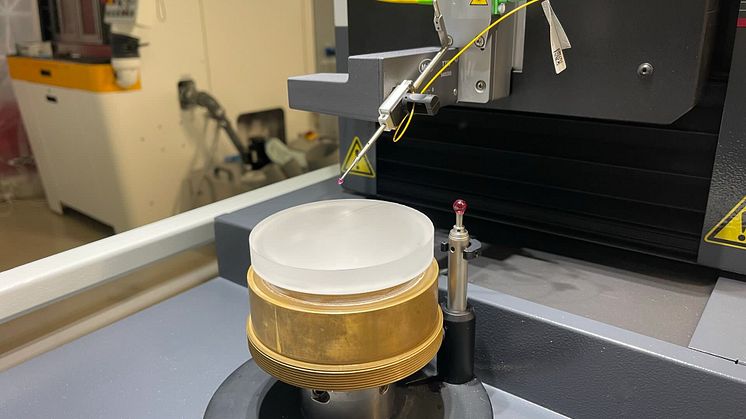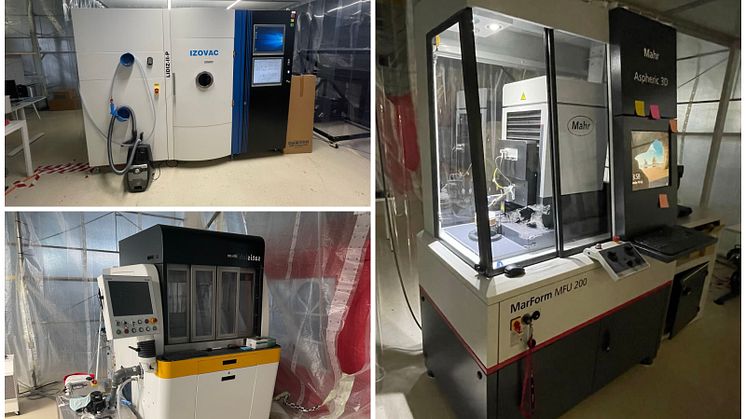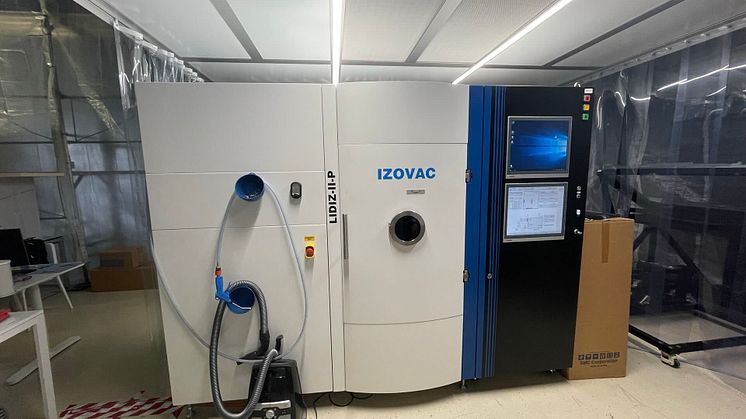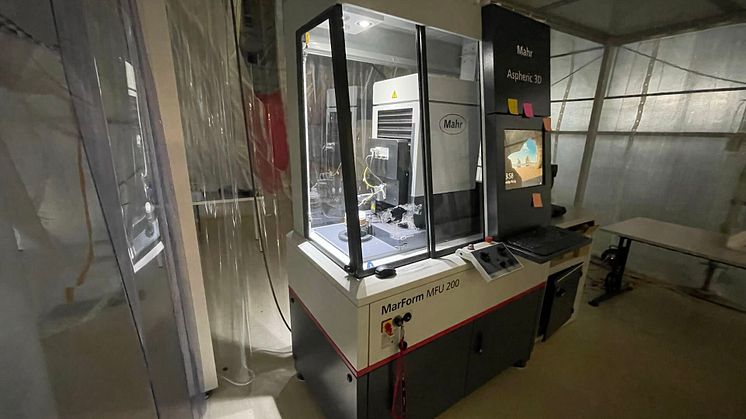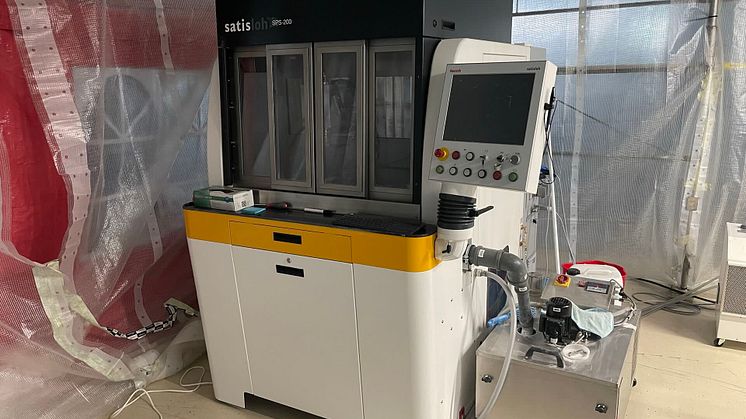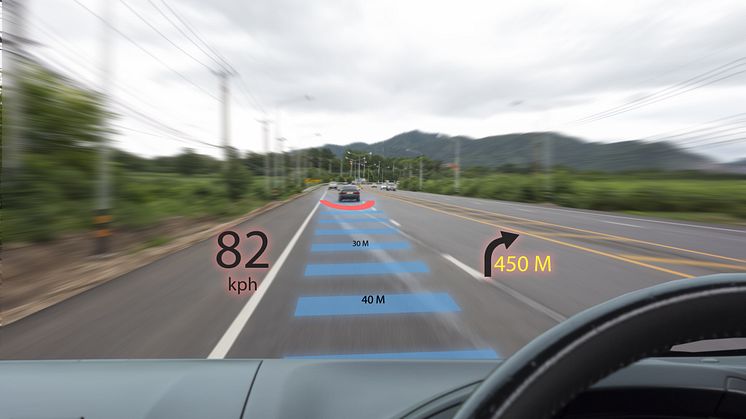
Press release -
From the cockpit into the car: the technology behind head-up displays
The technology of head-up displays (HUDs) originated in aviation and is now mainly used in cars. Through the interaction of imaging unit, optics module and projection surface, important information is projected directly into the driver’s field of vision. How does this work exactly? And how are the individual components manufactured?
A head-up display (HUD) is a display projected into the user’s field of vision. For example, in cars, details like speed, navigation instructions, or warnings are displayed on the windscreen as if there were a display in front of the bonnet. This means that the driver does not have to take his eyes off the road, which increases safety. This is where the name comes from.
The evolution of HUDs from aviation to automotive engineering
The history of HUDs dates back to the 1940s, when they were first used in the weapon sights of fighter planes. Over time, these systems evolved into complex windscreen and have now become standard in civilian aircraft, such as the Airbus A350 and Boeing 787.
The technology quickly spread to the automotive sector. As early as 1988, Nissan had integrated a HUD system in the Silvia S13 and General Motors in their Oldsmobile Cutlass Supreme.
Three core components: How do HUDs work?
A HUD consists of three main components: an imaging unit, an optics module and the projection surface. The imaging unit is a computer with an LED light source for generating images.
This light first encounters the optics module, the core of the HUD system. Inside this so-called collimator lies simple but precise physics. A lens or an aspherical mirror refracts the divergent LED light into parallel beams. Due to limited space, multiple lenses and folding mirrors are used. If they do not meet the highest requirements, no clean image can be projected onto the pane.
In HUD technology, the projection surface is also known as a combiner. This is a semi-transparent mirror that transmits the ambient light and reflects the HUD light, thus creating a combined view of the environment and HUD. If the combiner is integrated into the windscreen, it is called a windscreen HUD. If it is realised as an external plastic panel installed between the driver and the windscreen, the system is termed a combiner HUD.
Overview of the manufacture of the key HUD components
The external combiner pane is made of plastic and exhibits an aspherical form. It adheres to tight tolerances to permit a sharp, undistorted image display. The pane edge is milled in such a manner that it remains imperceptible to the driver. Further, it is coated to be scratch-resistant and anti-reflective.
For a windscreen-integrated combiner, the laminated glass’s safety film frequently serves as the combiner. The car pane is composed of two layers of glass and a thin Polyvinyl Butyral (PVB) interlayer, which prevents the glass from shattering in an accident. To achieve sharp projection without ghosting, it executed in a wedge shape to counterbalance the reflections between the different layers of glass as well as the windscreen’s angled orientation relative to both the driver and the optics module.
Within this module, precision optics constructed from technical polymers are installed. Cyclo-Olefin Polymer (COP) represents a group of plastics widely used in the optical industry. They are employed in situations where glass can be substituted with plastic – such as in mobile phone camera lenses or indeed in HUDs.
The injection moulding process allows lenses to be produced with a minimised risk of defects like streaks or blowholes. Post-moulding, the optics are ground and polished, and treated with dielectric and anti-reflective coatings.
The completed components undergo rigorous quality control. Here, high-precision measuring instruments such as interferometers and scanning electron microscopes are deployed. A final calibration and check of the entire module ensures that it meets the high-quality standards before it is finally integrated into the finished HUD system.
Outlook: the future of HUD
The future of automotive HUDs is promising and innovative. While only one in ten new cars has been equipped with a HUD so far, this rate is expected to rise to almost 40% by 2030. In the course of this development, windscreen HUDs in particular are coming to the fore. However, Augmented Reality HUDs are also gaining momentum. Here, for example, warning alerts can be directly integrated into the real driving situation. Increasing consumer demands are providing additional impetus. Future generations of HUDs will not only offer comprehensive real-time information but are also conceivable in the context of autonomous vehicles as a central interface between human and machine.
For those wishing to participate in this growing market, investing in expensive manufacturing machinery is necessary – unless one opts for second-hand options. On Surplex.com, ten machines from a manufacturer of HUD optics are up for auction on 20 October. Specifically: a ZOVAC LIDIZ-II-P for optical coatings, two SATISLOH grinding machines for precision optics processing, analysis and measurement equipment such as a scanning electron microscope, an interferometer and a harmonic reflectometer, as well as an ion beam milling system and two lasers.


About Surplex
Surplex is one of Europe’s leading industrial auction houses and trades worldwide with used machinery and equipment. The 18-language auction platform Surplex.com records approximately 50 million-page views annually. More than 55,000 industrial goods are sold each year at more than 800 online auctions. The company is based in Düsseldorf (Germany) and has offices in 16 European countries. Over 220 employees from 20 different nations generate an annual turnover of more than EUR 100 million.


